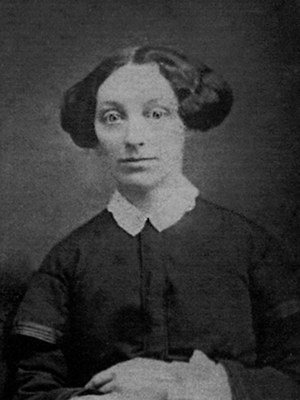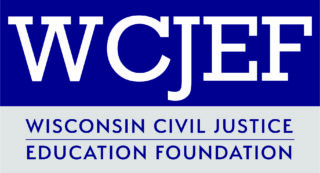“I am afraid you will be disappointed about the book.”
Maria Frost, January 21, 1856.
Lavinia Goodell published numerous articles and stories in her lifetime, but she was not the only family member with literary tendencies. Her father, William Goodell, was a prolific writer who authored many books and countless articles, poems, and letters to the editor. It is not as well known that Lavinia’s sister, Maria Goodell Frost, was also a published author and was the only Goodell sister to publish a book.

In 1855, the American Reform Tract and Book Society offered a $100 premium for the best manuscript for a religious anti-slavery Sunday school book. Out of the forty-six manuscripts received, the Society chose Maria’s work, which was titled Gospel Fruits, or Christianity Illustrated. In addition to the prestige of seeing her book in print, the prize money was a welcome bonus for Maria’s young family. (For perspective, Maria’s pastor husband’s salary was approximately $500 a year, so $100 was a significant boost to the family’s income.) Maria received the good news that she had won the competition in late December 1855.

In January 1856, Maria wrote to her sister and parents:
I have a check for $100, think I shall put it in the bank for the present. When we move again, which will very likely be in the course of a year, I shall not have much household stuff left, dishes will be all gone & other things in a broken convention, how much I shall need it then you can judge. I would rather not break it until then if possible.
I am afraid you will be disappointed about the book, you will expect something great, there is no effort at style in it, the story is told with great simplicity, and if it has any merit it is because important & valuable religious truths are connected that have often been disjointed.
I dread the criticism that is to come & wish I had taken more pains. I did not realize the publicity of the thing until now. The Garrisonians, of course, will not like it. There is too much experimental religion in it to suit them.
The book appeared in the spring of 1856. It sold for 35 cents a copy.

The American Reform Tract and Book Society’s catalog contained a review from the Watchman and Reflector of Boston which called it, a good book “ showing the wickedness of slaveholding, and the folly of prejudice against color. It is illustrated with engravings, and is worthy of being placed in the hands of all week-day and Sabbath School children.”
The book’s preface explained Maria’s goal in writing it:
It is the design of this little work, to show what true religion is, and that it can not exist without a sympathy for the oppressed; or, in other words, that the Gospel spirit is perfectly antagonistic to Slavery.
It is maintained that the salvation of the soul includes a salvation from the sins of selfishness and prejudice, which are the parents of slavery.
At the same time, it strenuously insists that a change of heart, by the Holy Spirit, is essential to a full and acceptable development of Anti-Slavery principles.
The characters that are portrayed here, are not altogether fictitious, and some of the conversations and scenes, or similar ones, have fallen under the observation of the writer.
It has been the aim to present one of the great fundamental truths of the religion of Jesus Christ, in a form so simple and child-like, that the very youngest readers may not fail to feel its force, and comprehend its practical bearings.
We have not a found a record indicating how many copies of the book were sold. Maria apparently did not retain any extra copies for herself since in 1863, she wrote to Lavinia, “I want you to send me by mail a copy of Gospel Fruits for I have lost mine.” In the years after Gospel Fruits was published, Maria tried to interest the Society in publishing other works, apparently with no success. Throughout the Civil War, Maria contributed short pieces to the Principia, her father’s anti-slavery newspaper, and in 1863 her book length manuscript, “Children of the Covenant or, the Christian Family,” appeared there.
Maria was a good writer, and she enjoyed the craft of writing, but she also hoped that she could sell more of her works to bolster the family’s always precarious finances. In 1867, she wrote to Lavinia, “How I wish I could write for something and earn money to get some furniture for my house.” Lavinia offered suggestions for possible topics and publishers, but none came to fruition. Although it does not appear that she ever sold any other manuscripts, Maria continued to be a prolific writer of letters and articles for the rest of her life.
Sources consulted: American Tract and book Society letter to Maria Frost (December 20, 1855); Maria Frost’s letter to Lavinia, William, and Clarissa Goodell (January 21, 1856); Maria Frost’s letters to Lavinia Goodell (July 14, 1863; October 10, 1867); Catalogue of Publications of the American Reform Tract and Book Society, Cincinnati (1856); Gospel Fruits, or Christianity Illustrated (American Reform Tract and Book Society, Cincinnati, Ohio, 1856).







